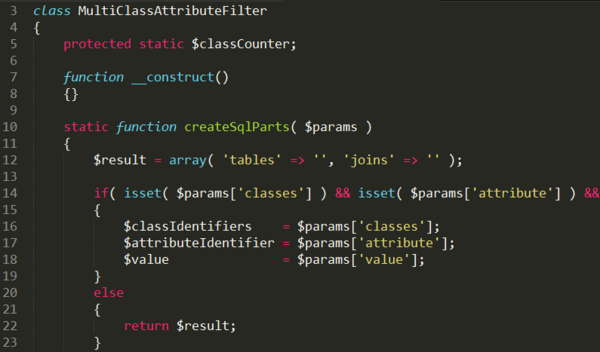Composer is a dependency management tool for PHP that eZ Publish 5 uses. The following is simple step-by-step how-to on using Composer to install eZ Publish (legacy) with additional extensions.
Electronic media company Rasmussen Reports is best known for their US elections polling, but they do public opinion polling on a wide variety of topics, releasing new poll results on its website daily. Their multi-tier paywall subscription system has successfully helped them generate website revenue at different levels of user engagement.

Retrieving content is one of the most common use cases when working with a content management system. eZ Publish provides a powerful way to retrieve content with its fetch functions. Although it provides a powerful framework for filtering and sorting the content based on a wide range of criteria, sometimes you need to extend the framework. Adding new filters to fetch functions is achieved by using extended attribute filters.

In the world of books, book publishing and bookselling, the metadata exchange format “ONIX” is the preeminent method of communicating information about a book. In spite of the fact that ONIX is a rather flawed standard and protocol for exchanging bibliographic information, it is the standard which everyone has settled on. Mugo has been working with ONIX since 2003, first building a freely available ONIX management system as a proof of concept for the Centre for Canadian Studies in Publishing at Simon Fraser University and most recently building a turn-key system for an ONIX website - that is - an ONIX powered website.
Open source communities rely very strongly on the community to advance the software in question. eZ Publish adds the "enterprise" part to "enterprise open source content management system" by not only targeting larger enterprises but by also adding a company vendor -- eZ Systems -- behind the software. This helps spur development forward on a consistent pace. However, there is still immense value in having the implementation partner companies contribute their code and insights. Contributing back might not be a natural thing for the partner companies to do; if you're such a partner company, here's why you should and how to do it.
As a web development company, we spend a lot of time deep in code, implementing solutions. However, essential to our success is the proper use of additional administrative and communication tools to keep organized, to run smooth projects, and to interact with clients. Skype, Dropbox, GitHub, and Google Apps are ubiquitous in the industry and embedded in our daily work. An additional set of less obvious tools are also just as important to our work.

Rasmussen Reports runs a contest where visitors have to guess what an upcoming public opinion poll result will be. Participants get points depending on how close they are to the actual result. A new question is asked every week, making for a fun, recurring way for visitors to interact with site content. Here's how we developed the contest on top of an eZ Publish extension called eZ Survey.
Over the years we've worked on many websites in the publishing industry. Each has a unique set of requirements and challenges, but we've been able to refine and re-use a set of tools and best practices. These make up what can be called a "publishing package" built on top of the eZ Publish framework.
Using eZ Publish's siteaccess system combined with hidden nodes, you can quickly create a flexible content staging solution.

Optimizing the editorial experience in a Content Management System is a continuously evolving task. The challenge is to make the CMS an enabling tool to help editors publish content as efficiently as possible. In many organizations, specific requirements at each publishing step can be complex and dynamic. Here are 10 built-in tricks, ways to extend the interfaces, and ready-made custom extensions to unleash the power of eZ Publish content management.
Having multiple projects stored in one Subversion repository is a challenge if you want to move one of the projects to another repository. Also, over time, moves and deletions can bloat the size of your repository with obsolete, unused data. In this article, we will show you how to extract SVN projects to their own repositories, preserving full commit histories.
For those who write long-running scripts in eZ Publish to perform operations (move, rename, update, and so on) on many content objects, here are a couple of quick tips to speed up the scripts and make them more efficient.